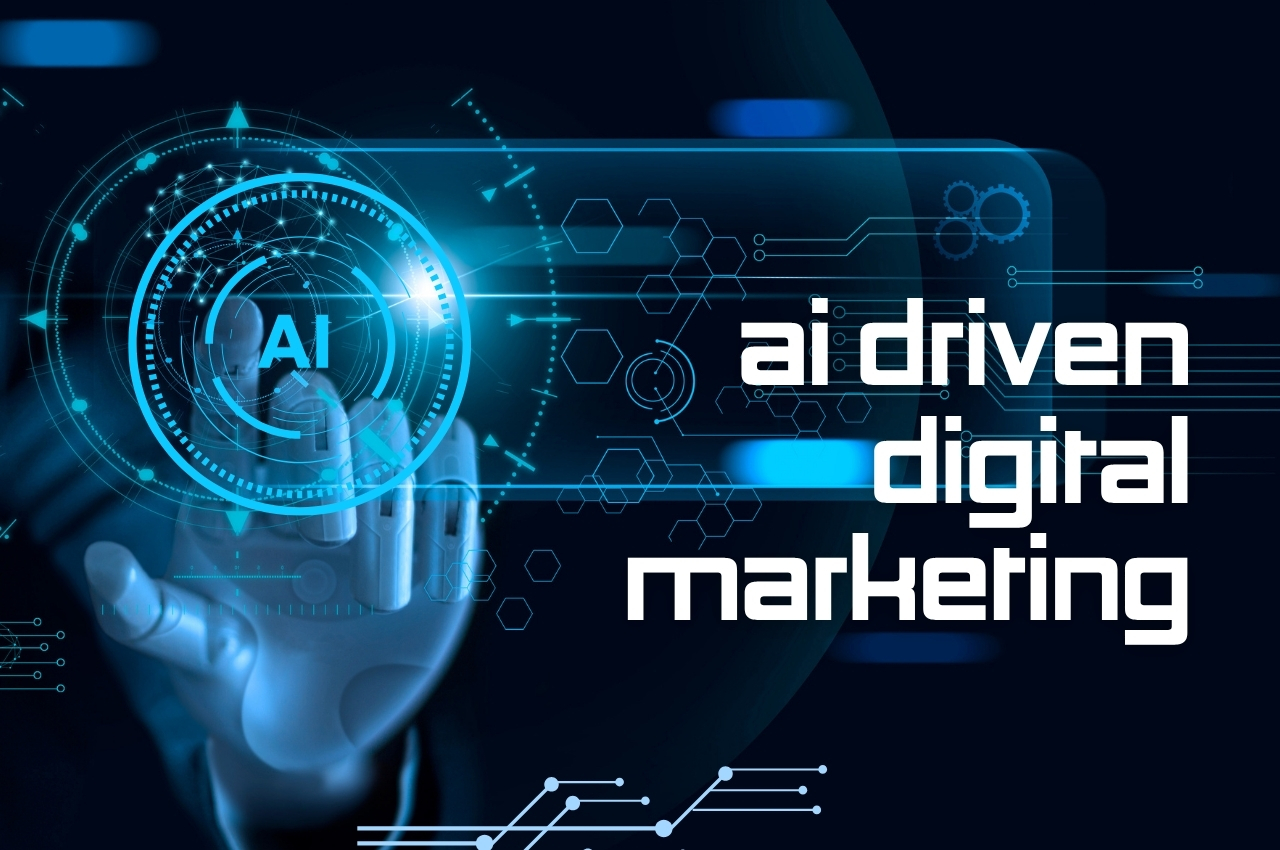Let me start with a little confession—I’ve been in the digital marketing game for over a decade. I’ve seen trends come and go, from the days of stuffing keywords into hidden divs (yeah, we all did it) to today’s ultra-sophisticated strategies involving machine learning and user behavior prediction. But nothing—and I mean nothing—has shifted the digital marketing landscape like Artificial Intelligence.
We’re not just automating email sends or setting up smart bidding anymore. AI is driving campaigns, interpreting data, creating content, and in some cases, making better marketing decisions than seasoned professionals. Let’s talk about what that really means—beyond the buzzwords—and how you can leverage AI driven digital marketing to elevate your business.
What Exactly is AI-Driven Digital Marketing?
In plain English, it’s when marketing tools use artificial intelligence to make smarter decisions. That includes analyzing customer data, predicting trends, creating content, segmenting audiences, personalizing user experiences, and optimizing ads—in real-time.
Think of it as having a super-intelligent assistant who never sleeps, crunches data 24/7, and learns from every click, scroll, and interaction.
For example, if you’ve ever gotten an eerily relevant product suggestion five seconds after Googling something, that’s AI at work. Platforms like Google Ads, Facebook, and even Shopify are deeply integrating AI to personalize the marketing experience down to the individual user.
Why It’s a Game-Changer for Marketers
Let me share a quick story.
Last year, I ran two email campaigns for a client in the skincare industry. One was fully human-managed—traditional A/B testing, segmenting based on past purchases, crafting content manually. The second was assisted by an AI-powered tool that handled segmentation, sent time optimization, and even suggested subject lines.
The AI-assisted campaign performed 36% better. Higher open rates, better CTR, and, most importantly, more conversions.
Here’s why AI is a game-changer:
- Speed and Efficiency: AI tools can analyze massive datasets in seconds—something no human team could pull off.
- Hyper-Personalization: Tailor content for each user based on behavior, preferences, and history.
- Smarter Predictions: AI can forecast trends and user actions, helping you stay one step ahead.
- Real-Time Optimization: Campaigns can auto-adjust based on live feedback and performance metrics.
Real-World Tools You Should Know
There’s a whole buffet of tools out there, but here are a few I’ve personally used and recommend:
- Jasper AI for content creation: Fantastic for generating blog outlines, product descriptions, or even ad copy. (But always human-edit for tone and context.)
- Surfer SEO for AI-assisted content optimization: Helps you align your articles with what Google wants—without keyword stuffing.
- HubSpot’s AI CRM: Tracks customer behavior and suggests marketing actions.
- Google Performance Max Campaigns: Uses AI to deliver ads across all of Google’s channels with minimal manual input.
Remember, tools are only as good as the hands that wield them. Don’t let AI do all the work—guide it with clear strategy and human judgment.
How to Build SEO Authority Without Backlinks (Yes, It’s Possible)
This might sound controversial, but in 2025, SEO authority doesn’t solely depend on backlinks.
Sure, backlinks still matter. But with AI and semantic search growing rapidly, Google’s understanding of content quality and topical authority is evolving. Here’s how to build SEO authority without relying on backlink building schemes:
1. Focus on Topical Authority
Create a cluster of related, high-quality content that addresses your niche thoroughly. For instance, if you run a blog on sustainable living, don’t just write one post about composting—cover indoor composting, bokashi methods, composting mistakes, and so on.
2. Prioritize User Intent
AI understands context better than ever. Use tools like AnswerThePublic or Google’s “People Also Ask” to uncover what your audience really wants.
3. Leverage AI for Content Gaps
AI-driven tools can help identify what’s missing from your competitors’ content. Fill that gap with better, more complete content—and watch your rankings improve.
4. Improve On-Page Experience
Load speed, mobile-friendliness, and clean navigation matter. Google’s AI algorithms pay attention to these signals as part of user satisfaction.
By combining AI insights with consistent, helpful, and user-first content, I’ve helped multiple clients rank on Page 1—without spending hours begging for backlinks.
The Human Touch Still Matters
Here’s the thing: AI can give you insights, content suggestions, and even run your ads—but it’s still a tool. Your brand voice, empathy, storytelling, and connection with your audience? That’s 100% human.
I always recommend blending AI with your own expertise. If you’re an expert in a field, speak from experience. Share anecdotes, mistakes, lessons—Google loves that, and more importantly, so do readers.
Final Thoughts
We’re living in a marketing renaissance. AI isn’t here to take your job—it’s here to make you better at it. Embrace the tools, learn how to use them well, and never lose the human touch that makes your brand relatable and trustworthy.
Whether you’re a solopreneur trying to build SEO authority without backlinks, or a marketing team looking to scale, AI can be your secret weapon—as long as you stay authentic and focused on real people, not just algorithms.
If you’re just getting started, start small. Test one AI tool. Try one predictive analytics feature. Track the results. Tweak. Repeat.
This journey is part science, part art—and with AI by your side, you’ve got a powerful brush in hand.

